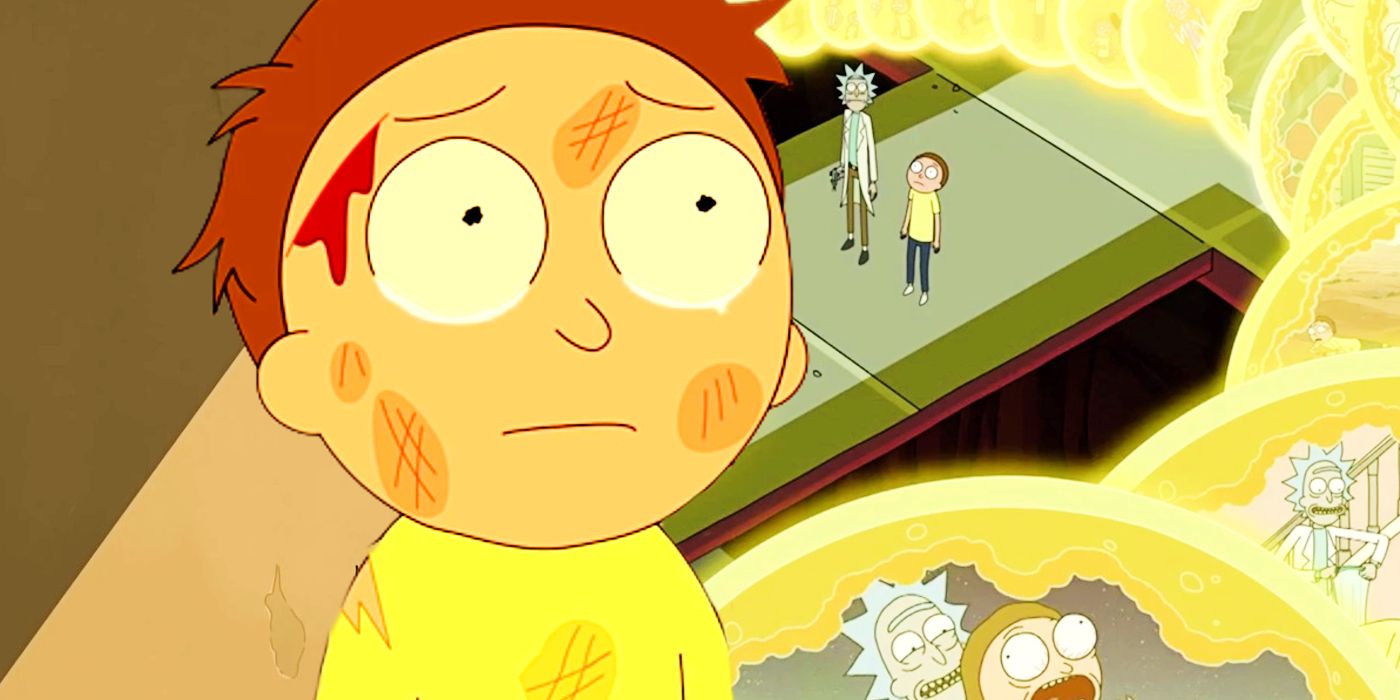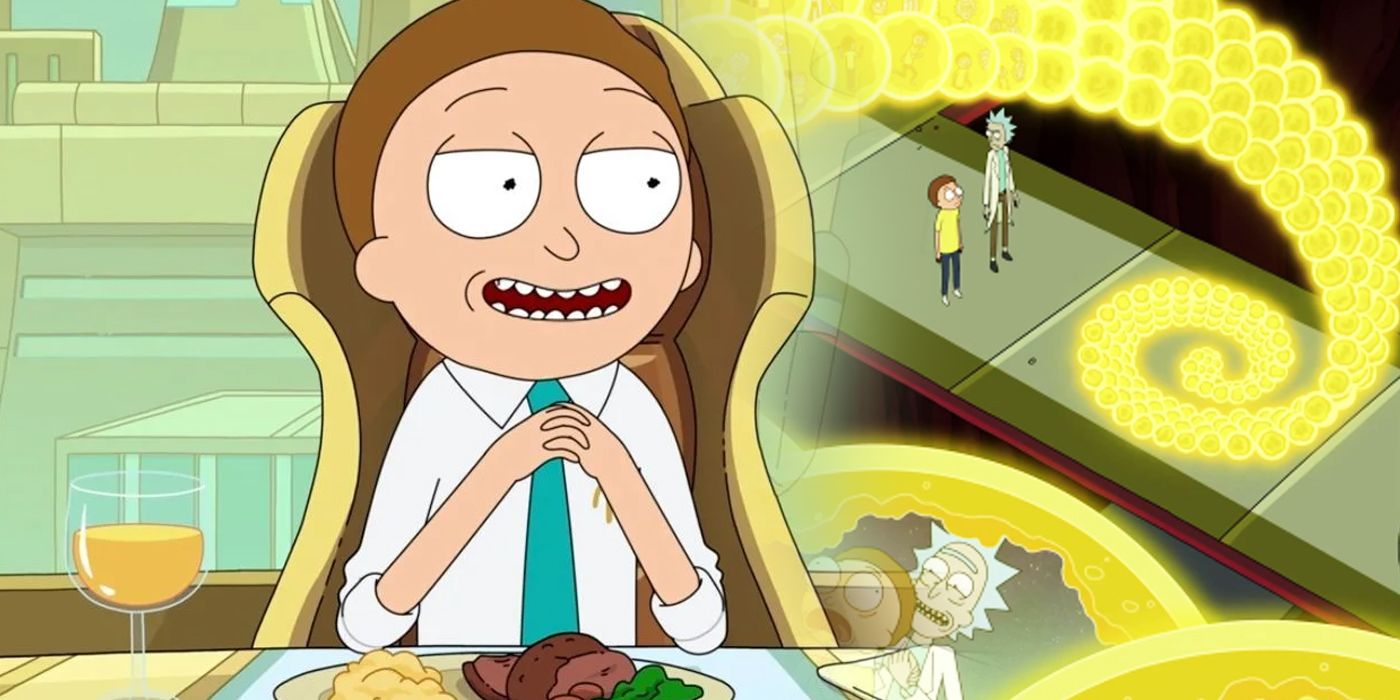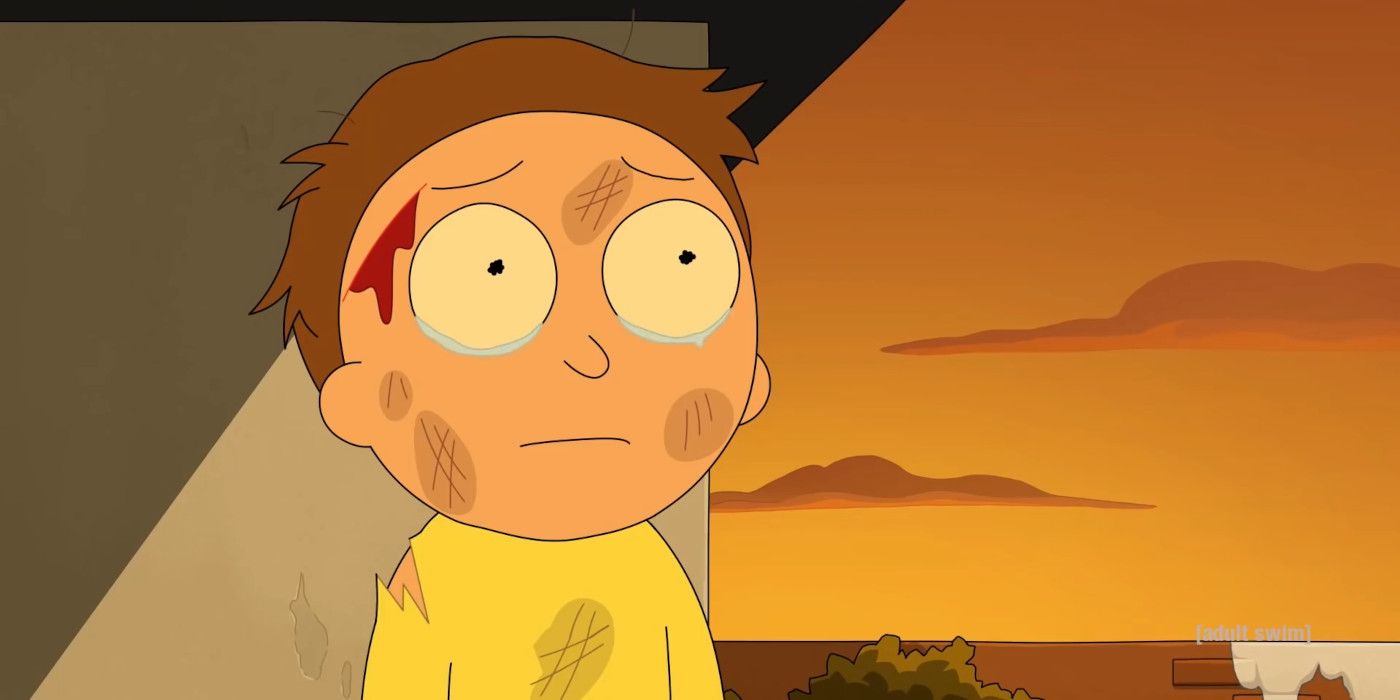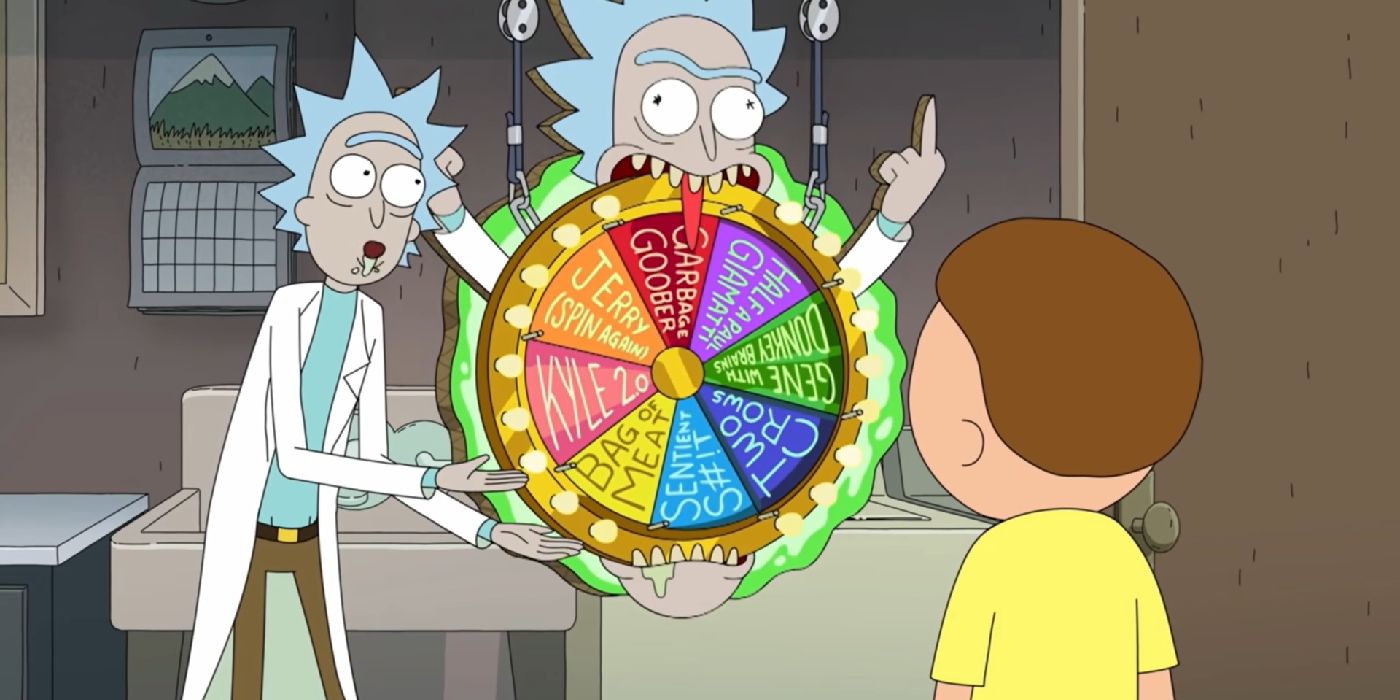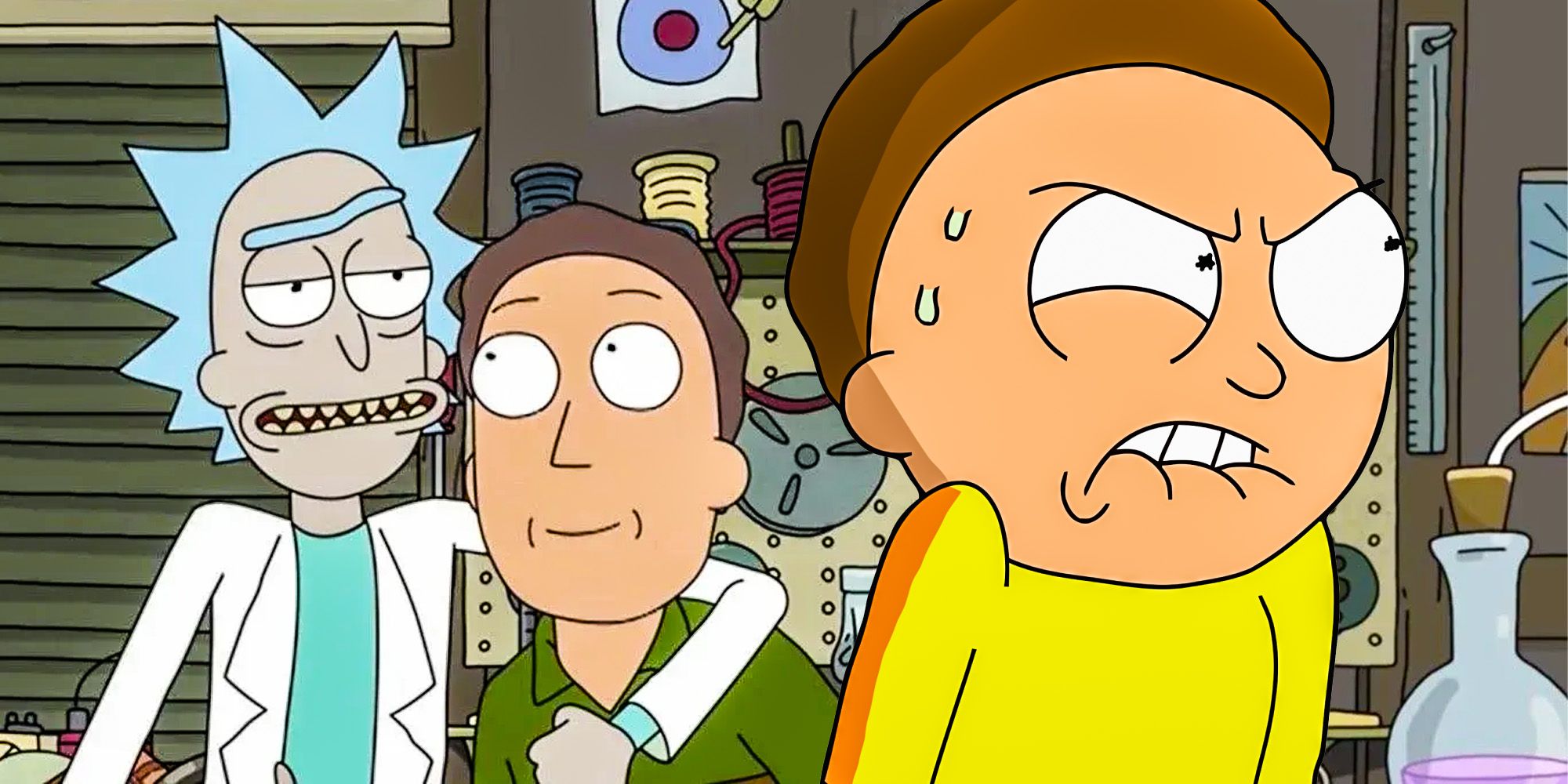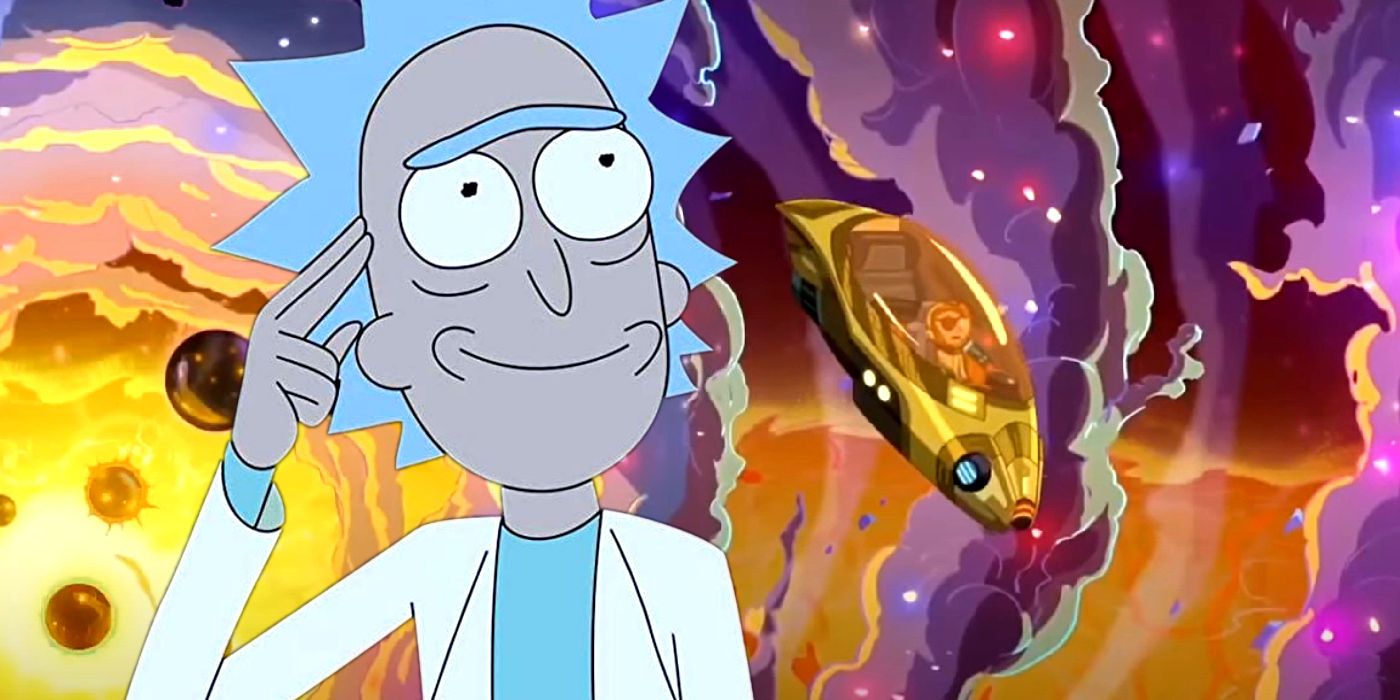Although Rick & Morty’s season 5 finale seemed to rewrite the rules of the show’s universe, in reality, the series spent the entire preceding season setting up season 6’s storytelling success. Rick & Morty is, it is fair to say, smarter than it seems. While the Adult Swim hit may not be as ingenious as some infamous copypasta suggest and viewers do not need a high IQ to understand Rick & Morty, beneath the show’s silliest moments there is a storytelling structure and overarching narrative across cohere over its seasons.
For example, although Rick & Morty’s “Rickdependence Spray” (season 5, episode 4) gained a lot of undeserved fan hate for being the season’s most immature outings, the episode secretly set up Morty’s character development in its goofy plot. Similarly, the grossest and most seemingly puerile of the show’s storylines often come back in unexpectedly profound and poignant ways long after they are introduced, forcing viewers to pay close attention to characters with names like Mr. Poopybutthole. With this in mind, it is no surprise that the show-shaking season 5 finale surreptitiously set up the more serialized storytelling style of Rick & Morty season 6.
On first viewing, the events of Rick & Morty’s season 5 finale seemed as if they would inevitably restructure the entire series. Until now, Rick and Morty could abandon one reality in favor of another whenever things get too intense, whereas Evil Morty’s plan has seemingly deprived them of this escape route. Thus, it looks as if the show will go from a traditional sitcom wherein canon is inconsistent and the status quo is restored at the end of every episode to suddenly being a serialized show wherein one week’s story leads directly into the next episode. Destroying the Central Finite Curve meant that Rick & Morty season 6 could no longer reset its status quo and was now inevitably going to lean into serialization. The thing is, the preceding season already acknowledged this and set Rick & Morty up for success by subtly adding more canon and consistency between each of the show's installments.
Rick & Morty’s Season 5 Finale Explained
In Rick & Morty’s season 5 finale, Evil Morty destroys the Central Finite Curve, killing countless Ricks and Mortys in the process. More importantly, though, this act resets the show’s canon by ensuring that Rick and Morty can no longer simply bail on an entire dimension’s reality and jump ship every time one of their many misadventures gets out of hand, as they have done prior. Instead, the until now fundamentally irresponsible and inconsiderate pair must face the consequences of their actions, something that would change both of their characters and the type of stories that Rick & Morty could tell as a TV show.
How The Finale Moves Rick & Morty To Serialization
By destroying the Central Finite Curve, Rick & Morty’s season 5 finale sets the series up to become a more serialized show. Since the characters can no longer bail on their realities in-series, this means the show itself can no longer simply reset the status quo every week and start over on a new adventure. Rick and Morty themselves can’t abandon each doomed romance with a guest star, each new planet where their plans go south, or each bizarre “giant killer semen try to take over the US” storyline they find themselves wrapped up in. However, the final example above illustrates how Rick & Morty season 5 set the series up for this shift in format, as the show gradually grew more reliant on serialized storytelling and started to abandon the status quo-reinforcing sitcom format even before the Central Finite Curve was destroyed.
How Rick & Morty Secretly Set Up Season 6
Season 5’s tonal shifts reflected Rick and Morty’s philosophies as characters, but the storytelling of the season also showed that the series was setting itself up for a more serialized approach in season 6. Even though the Central Finite Curve was still in place and Rick and Morty could still just leave any reality they encountered for another, Rick & Morty season 5 already operated as if one week’s story had a direct effect on the next’s week adventure (to an extent). The multi-episode Giant Incest Baby arc proves that Rick & Morty was able to take silly comedic elements and bring them back throughout numerous outings. Meanwhile, the sadder story of Rick searching for a connection with romantic flings, Birdperson, and ultimately two crows proves that the show could also set up dramatic plots that spanned separate episodes, with each standalone story building on the last.
Rick & Morty Season 6 Can Build On Season 5
Although Rick & Morty’s Hellraiser spoof worked, the episode (“Amortycan Grickfitti”, season 5, episode 5) is likely to be one of the last in the show whose events don't have a direct narrative impact on the next outing. The Giant Incest Baby introduced in episode 4 was paid off in episode 7, while Rick’s loneliness that was the focus of episode 3 came back in episode 8 before shaping the two-part season finale. As a whole, Rick & Morty season 5 proved that the show could serialize its stories without this leaving each standalone adventure feeling incomplete. By Rick & Morty season 6, plots like the show’s Hellraiser spoof will likely end up being incorporated into later outings instead of functioning as standalone adventures. However, the freedom of season 5 allowed the show’s creators to burn through a few more stories like that and the next episode (“Rick & Morty's Thanksploitation Spectacular,” episode 6, season 6) before starting to tell a more cohesive story.
Where Rick & Morty Season 6 Needs To Build On Season 5
Although season 5 set the series up for success as a serialized show, season 6 will need to tighten up its storytelling. Outings like “Forgetting Sarick Mortshall” (season 5, episode 9) struggled to hold their own as standalone episodes since they were busy setting up future reveals. While this is fine for the first part of a two-part finale, if Rick & Morty becomes a traditional serialized TV show, the series needs to ensure that each episode stands on its own merits and doesn’t function as a setup for the next outing. That said, like even the most popular animated sitcoms, Rick & Morty had some weaker episodes long before the show experimented with a more serialized approach to storytelling, meaning the show is well equipped to handle this issue in Rick & Morty season 6.

